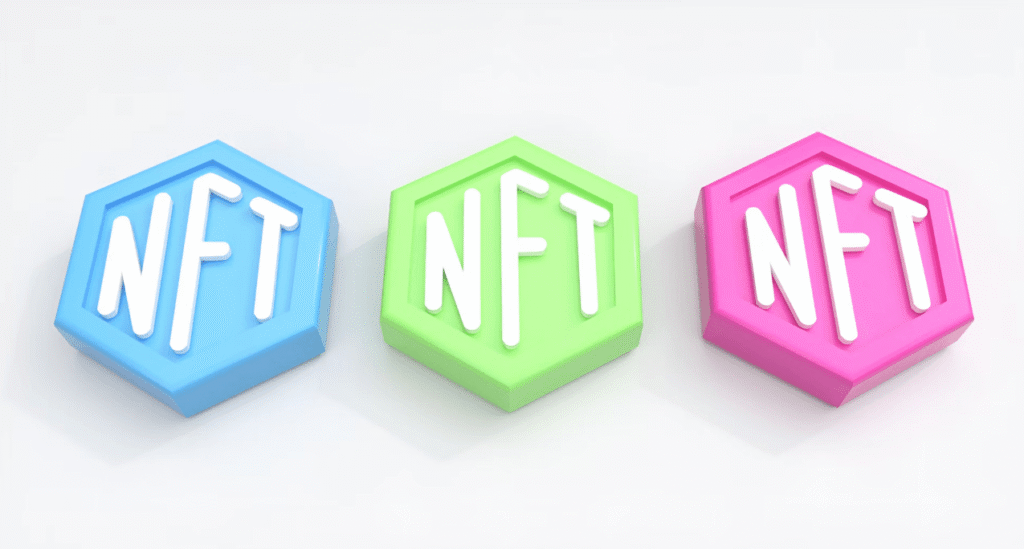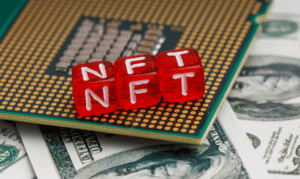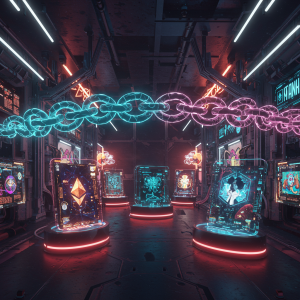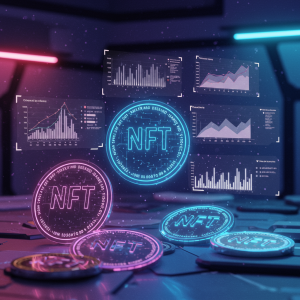Do NFTs Still Hold Value in 2025?

The meteoric rise of non-fungible tokens (NFTs) in the early 2020s sparked both awe and skepticism. These digital assets, verified by blockchain technology as unique, promised to revolutionize art, music, gaming, real estate, and even how we perceive ownership. But now, in 2025, the question on everyone’s mind is, “Do NFTs still have value?”
This blog explores where NFTs stand today, their evolution, and what roles they continue to play in the digital economy. If you’ve wondered whether NFTs are a technological fad or a groundbreaking innovation, keep reading—we’ve got answers.
The Evolution of NFTs
To understand where NFTs stand in 2025, we need to look back at their roots. NFTs exploded into mainstream consciousness between 2020 and 2022, with platforms like OpenSea and Rarible facilitating multi-million-dollar sales. Digital artworks such as Beeple’s “Everydays” sold for an astounding $69 million at Christie’s auction house, leading many to view NFTs as the future of digital ownership.
But this unrestrained hype led many critics to call the NFT space a “bubble.” Questions about speculative overpricing, environmental impacts of energy-intensive blockchain systems like Ethereum, and the proliferation of low-quality projects left a shadow over NFTs as 2023 arrived.
Fast forward to 2025, and the landscape has shifted. The NFT market has matured and consolidated, proving resilient in certain sectors while shedding much of its speculative frenzy.
Current Value of NFTs in 2025
NFTs have survived the early hype cycle, and their value is now measured by a few critical components:
1. Utility
The NFT market has steered away from art alone. That’s not to say digital art is obsolete, but NFTs now thrive in applications like ticketing, gaming, and membership programs.
For instance, gaming has become a multi-billion-dollar industry for NFTs. Play-to-earn (P2E) ecosystems like Axie Infinity have evolved into polished, sustainable models. Players now use NFTs to own in-game assets like weapons, avatars, or plots of land that they can trade, upgrade, or monetize.
Similarly, brands like Nike and Gucci use NFTs to enable exclusive access to physical events, product launches, or limited-edition collections. These “membership NFTs” focus on loyalty, creating real-world utility tied to exclusive perks.
2. Provenance and Digital Identity
NFTs remain a secure way to prove digital ownership, authenticity, and originality. Creators now bundle NFTs with physical products in innovative ways. For instance, when purchasing a luxury watch or handbag, buyers also receive a blockchain-powered NFT certificate that adds a digital dimension of provable exclusivity.
Additionally, social media platforms like Twitter and Instagram have integrated NFT profile pictures, enabling users to showcase their digital identity. Verified blockchain badges have become a social status symbol for individuals and brands alike.
3. Cultural and Social Value
Culturally significant NFTs, including music drops, one-of-a-kind moments in sports, and iconic visual art, continue to hold value. Platforms like NBA Top Shot, which sells video clips of sports highlights as NFTs, have refined their business models and still garner interest from collectors.
Similarly, musicians are using NFTs to build direct relationships with fans. By releasing NFT-backed albums, artists offer fans perks like concert tickets, unreleased tracks, or even profit-sharing from streams.
4. Scarcity and Rarity
NFTs remain rooted in the concept of scarcity. Unique, high-quality projects by respected creators still maintain value. While speculative “cash grabs” have dwindled, well-executed NFT collections tied to meaningful narrative continue to attract investors and collectors.
Key Sectors Still Thriving with NFTs
Gaming
The gaming industry has arguably been the most successful adopter of NFTs. Players now value the ownership of digital goods, especially those tied to interoperable ecosystems that allow assets to move across games or platforms. By 2025, blockchain games such as Star Atlas and The Sandbox have grown significantly, showing how NFTs intertwine with virtual worlds and economies.
Real Estate
Real estate has emerged as the sleeper hit of the NFT space. Virtual real estate within the metaverse offers new income streams via leasing digital spaces for advertisements, art galleries, or virtual offices. On the physical side, NFTs are increasingly used as deeds to homes, streamlining real estate transactions with unparalleled security and transparency.
Luxury Goods
Luxury goods brands continue to pioneer NFT-backed authentication to reduce counterfeit products and enhance customer trust. By buying a high-end product secured with an NFT, customers gain virtual proof of ownership, elevating the purchase’s value.
Challenges Confronting NFTs
While NFTs have matured, challenges remain in 2025.
- Market Saturation: The NFT space is crowded. While premium collections thrive, countless lesser-known projects have struggled to remain relevant, leaving new entrants skeptical.
- Regulation: Governments have increased scrutiny on NFTs, regulating both taxation and copyright infringement more strictly. This has added compliance costs for creators and marketplaces.
- Environmental Concerns: Although Ethereum moved to a proof-of-stake system in 2022, other platforms impact the environment, creating hurdles in appealing to environmentally-conscious consumers.
What Does the Future Hold for NFTs?
The future of NFTs looks promising in sectors where utility and community building take precedence. Projects with long-term plans, utility tokens, and cross-industry partnerships will lead. For example, the budding intersection of AI and NFTs may create even smarter, more dynamic assets.
Educational efforts are increasing public awareness, which may remove the intimidation factor and broaden adoption among mass audiences. Beyond enthusiasts and early adopters, NFTs will shape how brands engage with customers, how creators monetize work, and how we interact with virtual and real worlds.
How You Can Engage with NFTs in 2025
- Invest Wisely
If you’re investing in NFTs, do thorough research. Focus on collections tied to strong communities or utility. Avoid falling prey to speculative hype.
- Learn the Technology
Educate yourself about blockchain technologies like Ethereum, Solana, or Polygon so that you can make informed decisions about which platforms align with your goals.
- Participate in Communities
Join NFT groups on platforms like Discord or Twitter Spaces to stay updated and connect with creators and buyers who share your interests.
- Consider Utility First
When purchasing or creating an NFT, consider its real-world or virtual-world functionality. Think beyond aesthetics and evaluate how the token can add value to your life or business.
NFTs Still Hold Value in 2025
Despite the buzz diminishing, NFTs remain a powerful technology that has evolved far beyond its early days. From advancing ownership models to enabling new avenues of creativity, NFTs have proven they’re more than a fleeting trend.
Whether you’re a creator, an entrepreneur, or simply someone who loves being ahead of the curve, now’s the time to explore everything the NFT space has to offer.








